




Welcome to the spring issue of Agriprobe! As the rains came down during the last few months and our dams were filling up, the feel of spring and joyfulness of the very dry earth, humans and animals were felt on all levels. This edition of Agriprobe is showcasing the abundance of our services to the agricultural sector – highlighting successes and new projects “sprouting” from our endeavours.
It all starts with the humble, yet so important, bee and our Bee Industry Strategy, which was recently launched. With this proverbial “buzz” we set the scene with a number of articles on new projects and achievements during the last quarter.
As we browse through this edition, we realise that it is all about people, opportunities and partnerships. Taking agriculture and its people to a new level of success underlines investing in our youth, seizing opportunities that are not “business as usual”, empowering people on grassroots level and making communication the most important part of our service delivery agenda.
How do we communicate better, faster and more effectively? Are we using our communication tools to our best ability? Do we have a basket of communication tools and do we listen to our clients? Do we respond to their needs and how do we create awareness of our services supporting the sector? All these questions were put under the spotlight through a survey done to gauge whether our clients know and use our communication channels and services. Some of the results are shared in this issue.
Roy T. Bennett said: “Listen with curiosity. Speak with honesty. Act with integrity. The greatest problem with communication is we don’t listen to understand. We listen to reply. When we listen with curiosity, we don’t listen with the intent to reply. We listen for what’s behind the words.”

As we communicate with Agriprobe as our flagship communication vehicle, we should echo the words of Lawrence Clark Powell: “Write to be understood, speak to be heard, read to grow.” We sincerely hope that this edition of Agriprobe is good reading and that the information will grow our people in the sector.
Dr Ilse Trautmann
EDITOR
Petro van Rhyn petrovr@elsenburg.com
CHAIRPERSON
Dr Ilse Trautmann (021 808 5012) ilset@elsenburg.com
SECRETARIAT
Gizelle van Wyk (021 808 5022) gizellevw@elsenburg.com
EDITORIAL COMMITTEE
Ashia Petersen ashiap@elsenburg.com
Bianca Capazorio (021 483 4700) bianca.capazorio@westerncape.gov.za

Douglas Chitepo (021 808 5100) douglasc@elsenburg.com


Riaan Nowers (021 808 5194) riaann@elsenburg.com
Maritjie Cornelissen (021 808 5497) maritjiec@elsenburg.com


Brighton Shumba (021 808 5384) brightons@elsenburg.com

Pavarni Jorgensen (021 808 5227) pavarnij@elsenburg.com
Juanita Isaacs (021 808 7702) juanitai@elsenburg.com
John Constable (021 808 7763) johnconstable@elsenburg.com
Arie van Ravenswaay (021 808 5085) arievr@elsenburg.com
Someone once said: “The earth laughs in flowers.”

If this is true, our beloved Western Cape is roaring with laughter. Blessed with a substantial rise in dam levels, an abundance of flowers in bloom and the promise of high yields, the change of season should be a celebration. What better way to embrace it, than to feature the loveliness that is spring on our cover? With the courtesy of Arno Marais, manager at one of the Du Toit Group farms, Nooitgedacht outside of Ceres, we were able to capture the beautiful cherry blossoms for our cover – the cherry (blossom) on top of yet another inspiring and informative Agriprobe . We trust that you will enjoy the read as much as we enjoyed putting it together for you.
PUBLISHING TEAM


Publisher Erika Alberts
Layout & design Carmen le Roux

Copy editor Aletta Pretorius-Thiart
Financial director Pat Botha

TThe humble honeybee is as important to agriculture as water, land and air, and in South Africa over 50 different crops rely on them for pollination.

However, the bee industry has identified several problems affecting bees, and as the demand for food and therefore pollination is expected to grow in coming years, something needed to be done.

The department, working with bee associations in the Western Cape, has released a new strategy aimed at ensuring the sustainability of the province’s bee population.
In the Western Cape, 50% of commercial beekeepers’ revenue currently comes from pollination services, with the remaining 50% coming from the production of honey and other bee-related products.
The National Department of Agriculture, Forestry and Fisheries (DAFF) currently lists 130 000 managed colonies of bees and 1 800 beekeepers on their records. About 70 000 of the colonies are based in the Western Cape. However, the numbers are thought to be much larger, because of unregistered colonies and beekeepers.
According to Hortgro, the current pollination needs required by bee-dependent deciduous fruit crops are 65 000 pollination units – a demand currently being met. This is forecast to grow by at least another 30 000 units over the next decade due to new cultivars and growth in agriculture. The seed industry is also forecast to increase demand for pollination units by 30 000 over the next decade, and berry growers by another 20 000 units. In effect, the demand for pollination services is expected to double in the next decade.
“The department, working with bee associations in the Western Cape, has released a new strategy aimed at ensuring the sustainability of the province’s bee population.”Illustration © Ronelle Oosthuizen African honey bee climbing the yellow spadix of a white arum lily (Zantedeschia). Photo © Simon_g
Among the problems identified by the industry are insufficient forage, theft and vandalism, disease, environmental hazards such as pollution, and exposure to external factors such as fires and drought.
The new strategy aims to ensure the continued sustainability of the bee population by focussing on five key areas:
Ensuring sustainable bee forage; Research and innovation;
Developing a regulatory framework; Transformation in the industry; and Governance and stakeholders.
The single largest concern is that there will not be enough forage for bees in the Western Cape.
Sunflowers (Helianthus annuus) perform well when there is good pollination. To make sure that this is achieved many farmers hire bee hives from beekeepers to place in their sunflower lands which ensure their crop is well pollinated.

South Africa’s honeybee species rely on both indigenous and exotic species, like eucalyptus, flowering crops and suburban plants to provide forage sources year-round. One major problem is that eucalyptus has been targeted by DAFF’s Working for Water programme, because it is an alien invasive species. This has seen six species of the tree being targeted for removal, even in contexts where they pose no water threat.
The strategy proposes that a Bee Forage Commission be established, which will be composed of players from various provincial and national government departments as well as universities, and representatives from the bee industry.
Among the projects this commission will undertake will be the marketing of a plant book exploring bee-friendly plants, a campaign with nurseries to mark plants as “bee friendly” in much the same way some species are being marketed and sold as “water friendly”, and exploring the

possibilities of a mass bee forage planting project.
Minister of Economic Opportunities, Alan Winde, said: “We need to take this strategy and turn it into reality because a properly regulated and managed industry has real potential to create new jobs and expand the economy. The report shows that in South Africa, we import a lot of honey. South Africa has imported 2 000 tonnes of honey annually since 2010, and honey production has dropped to 40% of what it was in the 1980s. This is an agri processing opportunity, to produce local honey and honey-related products right here in the Western Cape.”
Minister Winde said farmers and residents of the Western Cape should be encouraged to plant bee-friendly crops and plants to secure a continuous food source for these important insects.

“Bees are vital to our food security. This is a way for members of the general public to get involved and make a difference,” he said. AP
Bee-friendly crops include:
• canola
• sunflowers
• lucerne
• pumpkins
• citrus
Bees prefer plants with flowers that are violet, blue, white or yellow and rely on smell to find them, so the home gardener can plant fragrant flowers and herbs such as:

• basil, dill, borage and coriander
• lavender
• fynbos plants such as proteas and ericas
• false olive
• spekboom
For more information, contact Bianca Capazorio: bianca.capazorio@westerncape.gov.za
TThe department recently hosted the first provincial workshop to gather input on the draft National Policy on Comprehensive Producer Development Support. The purpose of the new policy is to guide and regulate support to farmers. It aims, among other things, to standardise producer categories and facilitate access to tailored support.
The policy was developed by the Department of Agriculture, Forestry and Fisheries (DAFF), in consultation with
a variety of stakeholders such as agri businesses and commodities and has been presented at MINMEC and other clusters. The next step in the process is to get farmer input at provincial level, a process that was started in the Western Cape. Once done with provincial consultations, a national consultative workshop will be held.

According to Jeffrey Ngaka (DAFF) this policy will be regulating the support initiatives to the various categories of producers. He said the policy is being

drafted because the constitution requires that everyone has sufficient access to water and food. “We have limited resources to achieve that, therefore it must be well regulated. Measures must be put in place to ensure there is equal distribution. We must ensure the support in the sector is standardised.”
He went on to say that there are various challenges in the sector, such as land and water as well as access to finance and markets. “Hence we find that in the sector there is skewed participation along the value chain”.
According to Jeffrey productivity is still a challenge and there is an issue of skills shortages. If farmers don’t get support timeously it leads to a lack of productivity and inadequate production on land reform farms.
The policy makes provision for the establishment of a comprehensive producer register. All farmers will have to register on a central database and will then be issued with a Producer Registration Number in order to access support.
Sustainable management of resources are also emphasised in the document and optimal utilisation of natural resources strongly encouraged. Farmers must respond in an effective way to climate challenges.
Nkhangweleni Ramashia (DAFF) explained that the policy looks at financial and non-financial support to farmers. He elaborated on the reason behind the comprehensive stakeholder consultation process. “The national department alone doesn’t have the wisdom to get everything right. The idea is to critically assess the draft policy and get input and recommendations
so that we can improve on the existing document,” he said. “We want to identify problems and see how they can be resolved. We don’t want to come up with a policy, but the people who are part of it have not contributed. The policy must belong to the stakeholders.”
According to Joyene Isaacs, Head of the Western Cape Department of Agriculture, the policy proposes a new system of farmer categorisation. The categories determine the amount of financial support farmers are entitled to. Government has started a process of developing a “blended finance” model, meaning that financial support to farmers will be in the form of grants and loans. The category will determine the “mix” of the blend. Part of this process is to regulate the access by black farmers to the funding within a contained environment. Amounts will be reviewed annually.
She urged farmers to look at their farms as businesses that have to make money, not social activities, and therefore to ensure they have proper business plans in place and make optimal use of agricultural advisors. “This is a new era of doing things,” Joyene emphasised. She encouraged farmers to familiarise themselves with the new categorisation in order to understand the implication for their businesses. “Think of the processes you must put in place to put your businesses on a level where you can farm with only loans or completely without it.” The policy is about “graduating” black farmers to become commercial farmers and being independent. She calls on farmers to take the new policy seriously, because it affects them directly. The policy categorises farmers in terms of their businesses, not black, white, emerging, etc. AP
For more information, contact Adele Isaacs-Cloete: adelei@elsenburg.com
 by Pavarni Jorgensen
by Pavarni Jorgensen
IIn the spirit of the centennial Mandela Day 2018 campaign for people to commit 100 minutes of their time to help change the world around them, the Programme: Research and Technology Development (RTD) chose to support the Animal Welfare Society Stellenbosch (AWSS), a non-government and independent notfor-profit organisation for the welfare of animals. Their mission is to recognise animals as living beings with the right to a good quality life and achieve this through providing veterinary care, inspectorate services, education, a kennel and cattery, and a successful adoption programme.
The staff of the Directorates Plants Sciences and Research Support Services donated generously, contributing money towards buying food for the animals. Besides donating food and money, the animal scientists also volunteered to spend time at the shelter and walk the dogs through the vineyard.

“We can judge the heart of a man by his treatment of animals.”
– Immanuel KantFrom left: Marliné Burger, Resia Swart, Arie van Ravenswaay, Angeline Hugh, Frans Fransies and Leanne Jordaan walking the dogs from AWSS.
Nelius Nel, a trust student with the Directorate: Animal Sciences, described the experience as “bittersweet”. He said: “While it is saddening to see so many animals in need of loving homes, the animals at AWSS are extremely well cared for by motivated staff and provided the best possible environment in trying circumstances. Interactions with the animals are also a welcome opportunity for students who cannot yet adopt pets of their own.”
RTD donated a total of 200kg of dog and cat food, blankets and towels, litter boxes and kitty litter, and two second-hand panel heaters.
“The RTD team’s generosity and commitment to helping animals enable us to rehabilitate and find homes for hundreds of animals each year,” said Jessica Perrins, head of fundraising and communication at AWSS. “On behalf of the AWSS staff and all the animals we serve, thank you so much for believing in second chances. We couldn’t continue without you.”

It was clear that the volunteers enjoyed the experience as much as the tail-wagging recipients! AP
For more information, contact Pavarni Jorgensen: PavarniJ@elsenburg.com
“The staff of the Directorates Plants Sciences and Research Support Services donated generously, contributing money towards buying food for the animals.”The RTD volunteers. Standing from left: Marliné Burger, Liezl MacKenzie, Arie van Ravenswaay, Leanne Jordaan and Lauren Calvert. Sitting from left: Angeline Hugh, Pavarni Jorgensen, Frans Fransies and Resia Swart.
 by Dr Ilse Trautmann
by Dr Ilse Trautmann

TThe Alternative Crops Fund (ACF) of the Western Cape Department of Agriculture (WCDoA) (refer to article in the Agriprobe, Vol 14, No 3 “ACF supports climate smart production, job creation and economic growth – a progress report”) has concluded its fourth round of funding and the impact of the fund has been widely acknowledged by all the smaller industries receiving support.
Alternative, smaller crops include cherries, berries, fynbos, honey bush, nuts and pomegranates, to name but a few. These crops have high market value and are export-orientated. Alternative crops are
mostly water smart and would therefore be preferred crops against the current drought in the Western Cape and the rest of South Africa.
In 2015 the WCDoA partnered with AgriExpo to showcase alternative crops and products by launching the Cape Made Pavilion at the annual South African Cheese Festival. This was a roaring success!

In order to take this to the next level, the Cape Made Kitchen was launched in 2016, where these crops and products were used in an interactive kitchen jointly hosted by the Institute of Culinary Arts (ICA) and The Private Hotel School (PHS). In 2017, the PHS was the host, followed by the ICA in 2018.
Over the past three years, festival goers packed the kitchen and went home with not only more information on these crops and products, but also a recipe book to bring the delicious alternative-crop dishes into their own kitchens.


During the 2018 Cape Made Kitchen, chef Selwyn October of the ICA demonstrated recipes inspired by their former students and now acclaimed chefs Herman Lensing, Johnny Hamman and Zola Nene, who were the guest chefs this year. AP
The 2018 recipe book was a sterling example of a Better Together project, with partners Agri-Expo, MPO (Milk Producers Organisation), WCDoA, Hortgro and the ICA.
For more information, contact Dr Ilse Trautmann: ilset@elsenburg.com

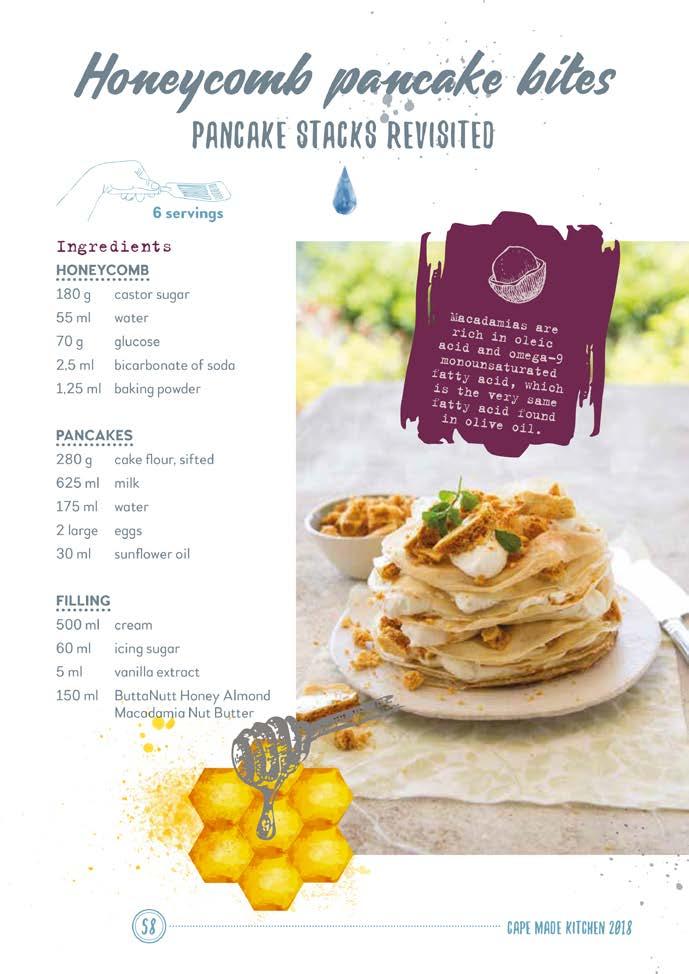

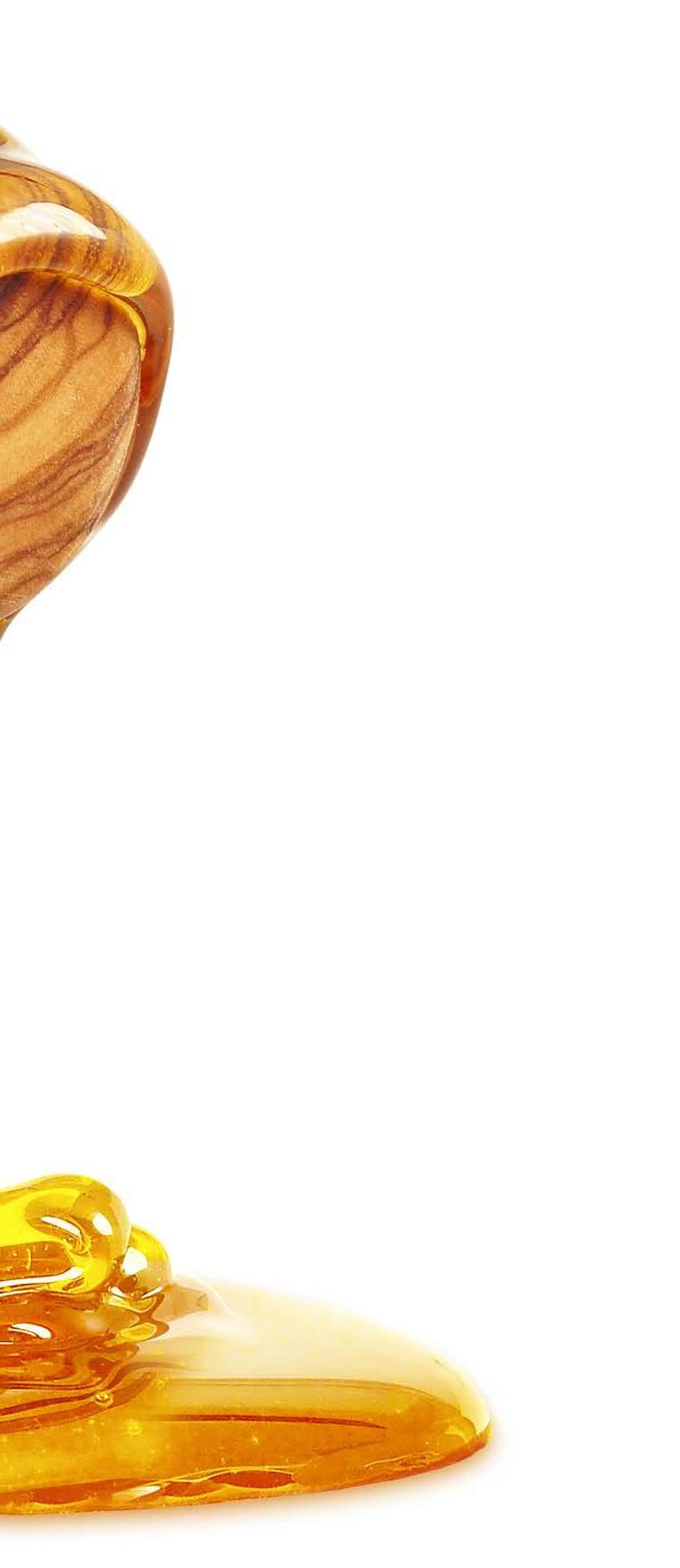
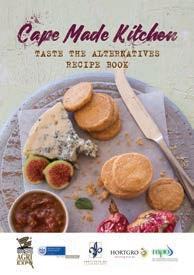


Daniel van der Merwe (links) saam met (kloksgewys) Anieka Muller, mede- nagraadse student aan die Universiteit Stellenbosch, en Willem Andrews, Eddie Daniels en Johannes Jansen van die Langgewensnavorsingsplaas, tydens die insameling van navorsingsdata op die plaas.

DDaniel van der Merwe, ’n nagraadse student aan die Universiteit Stellenbosch, het verlede jaar tydens die Kongres van die Suid-Afrikaanse Vereniging vir Veekunde die AFMA-prys (Animal Feed Manufacturers Association of South Africa) vir die beste wetenskaplike plakkaat ontvang. Daniel is tans besig met sy doktorale studie onder leiding van Prof. Ters Brand, spesialiswetenskaplike van die Hoofdirektoraat: Navorsing en Tegnologie-ontwikkeling by die Wes-Kaapse Departement van Landbou op Elsenburg.

Daniel, oorspronklik van Featherstone in Zimbabwe, se studie handel oor die ontwikkeling van ’n model om die ideale slagmassa van vyf verskillende inheemse skaaprasse (Merino, SA Vleismerino, Dormer, Dorper en Meatmaster) te bepaal.
Tans word alle groeidata, woldata, asook geskandeerde vetdiktes van die verskillende rasse oor tyd bepaal. Inligting oor die gehalte en eienskappe van leer en vleis word aan die einde van die groeistudies bepaal. Die navorsers sal die inligting in wiskundige formules verwerk en dan gebruik om ’n rekenaarmodel te ontwikkel om die ideale slagmassas van die verskillende skaaprasse te bepaal. Daar word beoog om die Namakwa Afrikaner-, sowel as die Il de France-rasse deel van die projek te maak.
Die projek word finansieël ondersteun deur Cape Wools SA, sowel as die Nasionale Navorsingstigting (NRF) van Suid-Afrika. AP
TersB@elsenburg.com
SSwys Viviers, ’n gewese MSc-student aan die Universiteit Stellenbosch, het onlangs die Proteïennavorsingstigting se prys vir die beste meestersgraad vir die jaar ontvang. Swys het sy studie onder leiding van prof. Ters Brand, spesialis-wetenskaplike van die Hoofdirektoraat: Navorsing en Tegnologieontwikkeling by die Wes-Kaapse Departement van Landbou op Elsenburg, uitgevoer.


“Die resultate kan in voerformules gebruik word om diëte met die ideale aminosuursamestellings vir die verskillende groeifases saam te stel.”Foto © Quintus Strauss
Die tesis handel oor die evaluasie van vyf verskillende proteïen- en aminosuurvlakke in onderskeidelik die vooraanvangs-, aanvangs-, groeiasook afrondingsdiëte van volstruise. Produksie in terme van groei, voerinname en voeromset is tydens die verskillende fases gemonitor. Die invloed van die verskillende proteïenen aminosuurvlakke (lisien, metionien, sisteïen, treonien, triptofaan en arginien) op die eindprodukte (leer, vleis en vere) is ook bepaal.

Die studie het die navorsers in staat gestel om die resultate van ’n voedingsoptimeringsmodel wat gebruik is om die ideale proteïen- en aminosuurvlakke vir die verskillende groeifases vir volstruise te voorspel, te evalueer. Die resultate kan in voerformules gebruik word om diëte met die ideale aminosuursamestellings vir die verskillende groeifases saam te stel.
Swys is oorspronklik afkomstig van Featherstone, ’n plaasdistrik sowat 150km suid van Harare in Zimbabwe, en is tans werksaam as dierevoedingskundige by National Foods Zimbabwe in Harare. AP
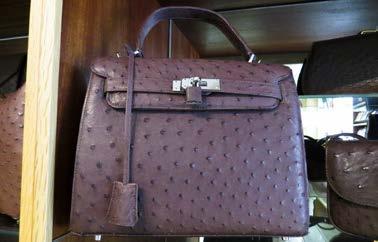

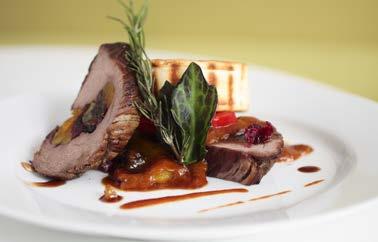

WWie is die drie manne agter al die drieë?
“Oom” Willie van Zijl, O’Brien Perel en Len Conradie bestee ure van hul eie tyd langs die rugbyveld saam met die trotse Elsenburgrugbyspan.
Die Elsenburg-rugbyspan se aankoms by die jaarlikse PANNAR-rugbyweek hoef nie aangekondig te word nie. Die oomblik wat die Elsenburg-bus by die gronde inry, kan ’n mens byna die respek van die ander spanne hoor. “Wat is hulle geheim?” is die vraag op baie se lippe, in absolute bewondering.

Die trio is eenparig in hul mening dat Elsenburg se sukses te danke is aan die geleentheid wat hulle het om gedurende die jaar teen die Universiteit Stellenboschkoshuisspanne te speel. “Hulle oefen teen
van die bestes.” Dit is dalk waar, maar ons besef die waarde van opregte ondersteuning gebore uit passie vir die saak en die enorme rol wat afrigting in enige span se sukses speel.
Dit is ook in dié gees dat die CEDARA-span vanjaar gevra het vir ’n foto saam met die Elsenburgspan ná die telling van 100-0 in Elsenburg se guns – ’n bewys van uitstekende sportmanskap. Welgedaan aan Elsenburg wat 39 van die 49 toernooie in die verlede gewen het.
“Oom” Willie van Zijl vertel dié rugbyweek het in 1969 vir die eerste keer plaasgevind, en die onlangste een is vanjaar van 30 Junie tot 5 Julie deur die CEDARA Landbouopleidingsentum aangebied.
Verskeie landbouopleidingsentrums speel op ’n rotasiegrondslag gasheer vir hierdie toernooi. “Oom” Willie het ook erkenning gegee aan die dinamiese Suid-Afrikaanse PANNAR SEED-groep wat jaarlikse dié rugbyweek borg.
O’Brien: Ek het rugby begin speel toe ek ses jaar oud was, en ek hou steeds baie daarvan. Ek speel nie meer nie, maar is bevoorreg om deel te wees van die afrigtingspan. Ek hou van die spel in al sy fassette en net om die spelers te sien speel bring my vreugde. Ons kry ’n mate van vergoeding en is dankbaar daarvoor. Trotse oomblikke van my rugbyloopbaan was toe ek op laerskool ’n wendrie gaan druk het en ook toe ek in ’n Matie-ligawedstryd vir Elsenburg gespeel het!
Ons het met “Oom” Willie, O’Brien en Len gesels.
V: Waarvandaan die passie vir rugby?
“Oom” Willie: Ek is baie lief vir rugby. Hoewel ek self in my jonger dae rugby gespeel het, kon ek nooit self presteer nie. Ek het egter betrokke geraak by Elsenburgrugby en was betrokke toe Elsenburg die gesogte Sauer-trofee twee keer in die koshuisliga gewen het. Uit die 42 keer wat Elsenburg die SALK Landboukollegestoernooi gewen het, was ek 38 keer betrokke as bestuurder van die span en ook ondervoorsitter van die SALK-kommitee. ’n Groot prestasie was toe ek in 2011 deur die Maties-rugbyklub vereer is vir my bydrae tot rugby. Ek is ook toe as die 16de lewenslange lid van die Matieklub verkies. Ek het vanjaar uitgetree as ondervoorsitter van die SALKkommitee en is ook deur APAC en SALK met ’n toekenning vir my bydrae vereer. Ek dien nog as president van die Elsenburgrugbyklub. Die voorreg om by Elsenburgen SALK-rugby betrokke te kon wees, kan geld nie koop.
Len: Ek het self taamlik ernstig rugby gespeel in my jong dae en hou van die sport. Deesdae is dit ’n voorreg om ook buite die klaskamer met studente te werk. Dit is waar jy die studente die beste leer ken en met hulle vriendskappe bou. Ek is bevoorreg om met gehalte-studente en -rugbyspelers op die rugbyveld te werk. Elsenburg kry jaarliks heelwat goeie rugbyspelers en rugby is vir die studente belangrik.
“Oom” Willie: Ek is op Elsenburg gebore en teen volgende jaar wanneer ek aftree, sal ek al 59 jaar hier gebly het! Ek het vir 38 jaar hier gewerk.
O’Brien: Ek is al die afgelope 10 jaar ’n dosent by Elsenburg.
Len: Ek is sedert 2007 by Elsenburg. Ek is aangestel as dosent en is tans ’n senior dosent.
“Oom” Willie: My vrou, Suzette, en twee dogters en twee kleinkinders is my alles. Die twee kleintjies hou ons baie besig!
O’Brien: Ek is getroud met ’n pragtige vrou wat God oor my pad gestuur het en ons
dien God saam by ons kerk, The Christian Community Church op Stellenbosch.
Len: Ek is getroud met Elsje, ’n onderwyseres in die Paarl, en ons het twee seuns wat albei mal is oor sport, veral krieket, hokkie en rugby. Naweke is ons langs die sportvelde.

V: Wat doen julle in julle vrye tyd?
“Oom” Willie: Ek maak tuin en kuier saam met vriende.
O’Brien: Ek bring tyd saam met my vrou deur, ons gaan kerk toe en naweke gaan ry ons graag lang ente. Ek lees ook graag.
Len: Ek spandeer graag my vrye tyd saam met vriende en familie. My gunstelingplekke is by Vleesbaai en op ons familieplaas naby De Rust.
V: Wat is vir julle belangrik in die lewe?
“Oom” Willie: My Christelike geloof. Wees eerlik, wees betrokke, help waar en vir wie jy kan en moenie altyd iets terug verwag as jy iets gedoen het nie.
O’Brien: My geloof in God, want sonder God kan ek niks doen nie. Ook om te strewe na regverdigheid.
Len: Vir my is dit belangrik dat ons mekaar respekteer en met respek behandel.
V: Waarin het julle die ergste afkeur?
“Oom” Willie: As jou woord nie meer jou eer is nie.
O’Brien: Onregverdigheid.
Len: Disrespek.
“’n Paar jaar gelede toer ons met die Elsenburg-rugbyspelers na Frankryk. Met die voltooiing van die onderskeie dokumentasie is daar een van die spelers, Japie Nortje, wat tot almal se groot vermaak van alles ’n grap maak pleks van seker maak die regte inligting word op die vorms ingevul.
Ek het al oor die jare geleer jy moet duplikate van jou vliegkaartjie, paspoort ens. maak en by jou moet hou. ’n Student moet ook nooit sy eie kaartjie en paspoort by hom hou nie – iewers op toer is dit skoonveld.

Die aand voor ons vertrek is ek besig om die nodige afskrifte te maak en my reislêer
op datum te bring toe dit by my opkom dat Japie ’n les geleer moet word. Ons kaartjies is uitgemaak Kaapstad/Johannesburg/ Instanboel/Lyon retoer. Ek maak ’n kopie van Japie se kaartjie en verander die reisplan na: Kaapstad/Johannesburg/Taipei/ Amerika.
Die volgende dag voor ons vertrek, kom ons by die lughawe bymekaar en ek verduidelik die moets en moenies en oorhandig die kaartjies en paspoorte aan die spelers om te gaan inboek. Ek versoek dat elkeen hul kaartjie moet oopmaak en kyk of hul inligting korrek is soos wat ek dit voorlees.
Ek begin lees Kaapstad/Johannesburg/ Instanboel/Lyon. Daar is geen reaksie en ek lees dit vir die tweede keer, my oë gefokus
op Japie wat al bleker en bleker raak. Die manne bevestig hul kaartjies is reg, behalwe Japie. Ek vra hom wat is die probleem en hy hakkel-hakkel so ’n oomblik en laat weet daar is ’n helse fout op sy kaartjie. Ek loer belangstellend en laat hom toe skoueroptrekkend verstaan dat hy self die inligting voltooi het, en dat ons baie jammer is dat hy nie meer saam met ons kan toer nie. Die span speel ewe saam en begin een-een vir Japie groet.
Uiteindelik staan ek toe maar nader en gee hom sy regte kaartjie. Daardie gesig van verligting en oombliklike vreugde kan niemand beskryf. Sy woorde later op die toer was: ‘Vlieg sou ek vlieg, maar agterweë sou ek nie bly nie!’” AP
Vir meer inligting, kontak Maritjie Cornelissen: maritjiec@elsenburg.com
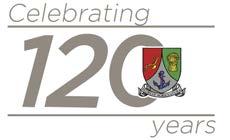
The Elsenburg Agricultural Training Institute, the first centre for agricultural training in Africa, was established in 1898. The Institute has secured an outstanding track record in agriculture and especially in the field of agricultural training.


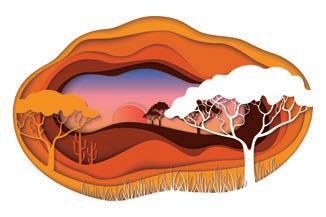 by Riaan Nowers
by Riaan Nowers
IIt is widely accepted by modern societies that the game ranching industry has made a critical and substantial contribution towards the recovery and build-up of healthy, sustainable game populations throughout South Africa.
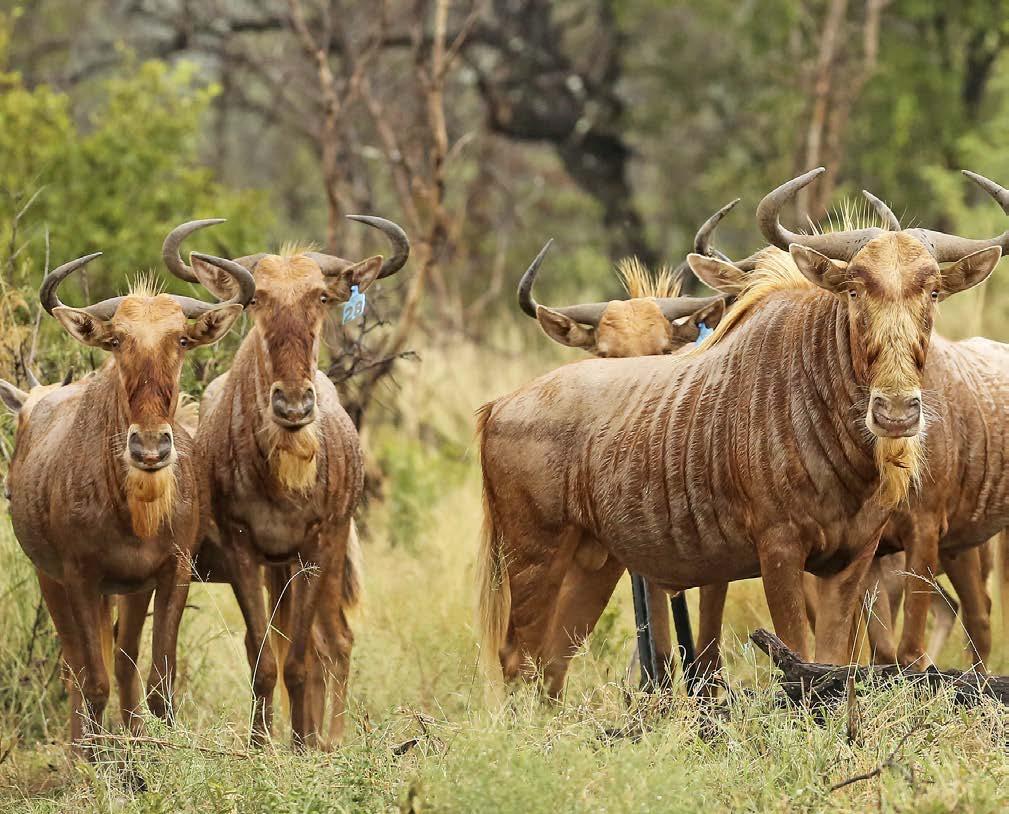
According to an experienced conservationist, legislation allows game farmers to breed selectively and intensively with selected game species in order to “improve” the physical appearance and presumable behaviour of animals. Game animals with recessive or unusual colour variations could in terms of regulations thus be produced through the use of intensive selective breeding programmes.

“The game ranching industry has made a critical and substantial contribution towards the recovery and build-up of healthy, sustainable game populations throughout South Africa.”
According to a detailed database on the price performances of game species on game auctions of the Western Cape Department of Agriculture, there was a steady increase in auction prices for the rising numbers of colour morphs/variants, which reached an all-time high in 2014. Many industry experts and economists forecasted that the resultant exorbitant prices received for these animals on auctions were an unsustainable “bubble” that will not last. However, numerous game breeders and new entrants to the game ranching industry were encouraged by the “wellmarketed” hype on rising prices for these animal species. This resulted in investors

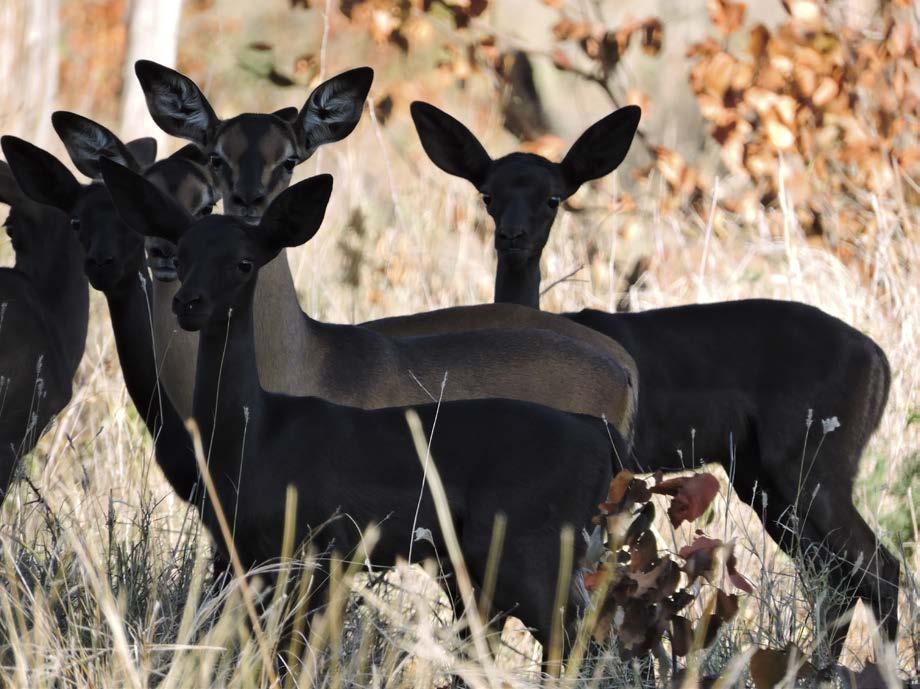
responding rationally to these economic signals, which increased the supply curves of this “product”. “Economics 101” tells us that this would rationally result in lower prices unless the demand curve responds over time.
“There was a steady increase in auction prices for the rising numbers of colour morphs/variants, which reached an all-time high in 2014.”
The ecological/environmental dilemma was that should these prices fall, a resultant dumping of low-value, genetically-inferior animals could take place, which could cause irreversible contamination of natural gene pools.
The socio-economic dilemma was that ranchers would sit with animals with drastically lower value that impact on the feeding regimes at ranch/farm level, which would be detrimental to veld conditions during prolonged periods of drought, therefor resulting in less farming income per hectare.
showed a near exponential decline in value since 2015 as the numbers made available on auctions increased. This financial growth and decline in value of species are clearly visible in Graph 1.
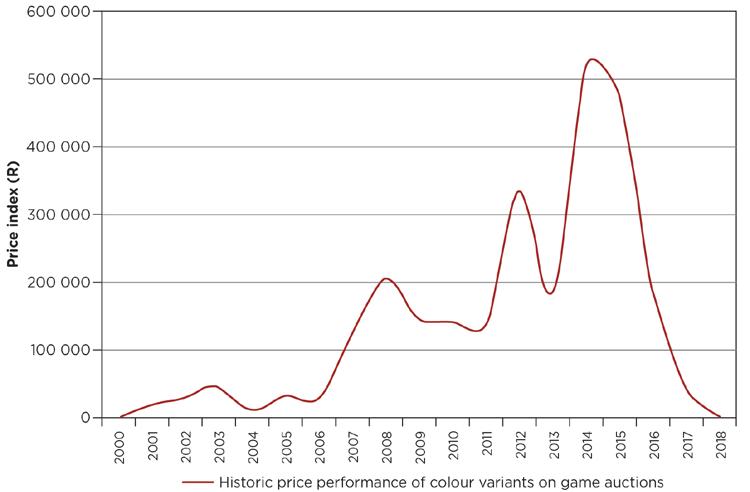
The database closely tracked the sales and numbers of colour variants and their relative proportion to total number of animals sold on auctions. Graph 2 captures the number of colour variants sold since 2003 as well as the colour variants inclusive of the number of animals with split genes and both growth results are in line with the trend shown in Graph 1. As numbers transacted increased since 2014, the value per animal declined. Graph 2 shows that the percentages of colour variants, inclusive of split animals, sold on auctions are increasing as the value of these species declined –reaching a high of 13,5% of all animals sold
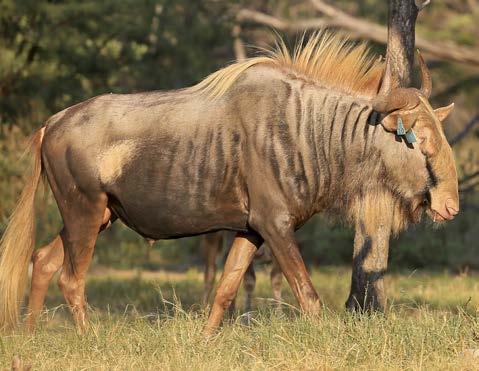
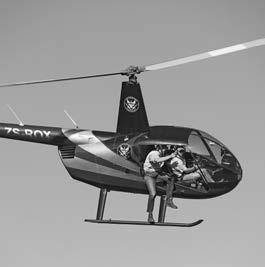
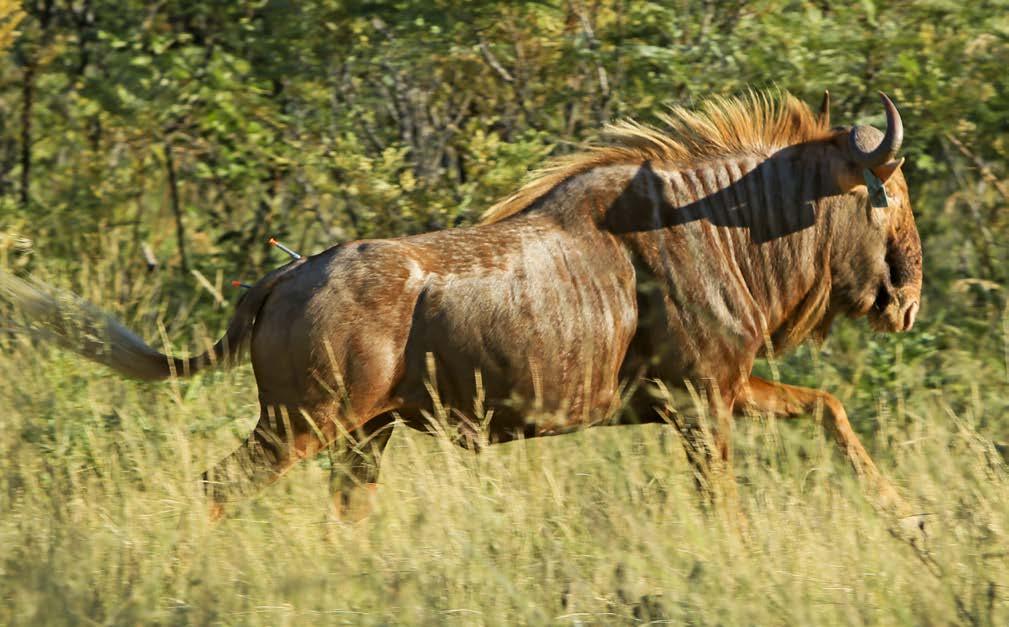
“The game ranching industry has learned that you cannot ignore basic economic supply-and-demand principles.”
Graph 2: The percentages of colour variants, inclusive of split animals, sold on auctions – increasing as the value of these species declined.
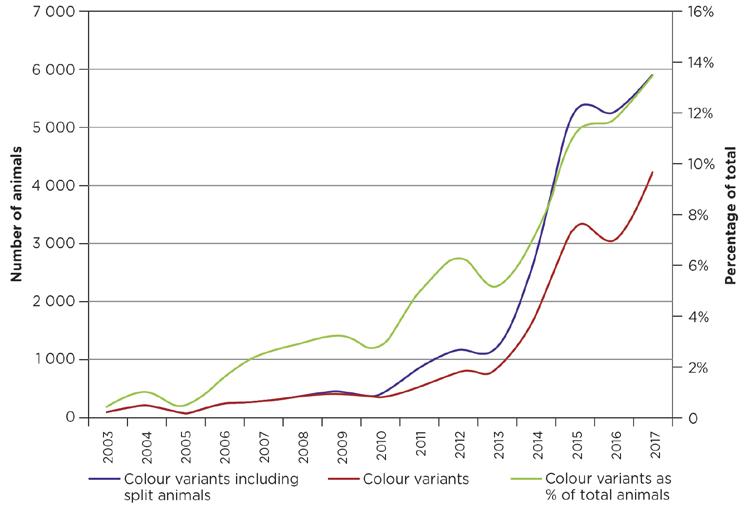
on 2017 auctions! This may indicate that game owners are now trying to get rid of these colour variants as their value crashed. This is not at all a unique phenomenon. In the sixties, white German Shepherds were extremely popular and sought after resulting in high prices. However, today the demand and thus supply of these animals are very low, as the popularity of white animals shrunk. White boxer dogs are also generally euthanised at birth as breeders seek to breed animals with acceptable breed-specific physical and behavioural traits. Will this happen to the game industry? Only time will tell.
Finally, the analysis of the game industry indeed reveals that the exorbitant prices realised by colour variants have drastically declined indicating that the forecasted bubble has indeed burst. What is of importance is that the game ranching industry has learned that you cannot ignore basic economic supply-and-demand principles – over time markets will return to a realistic balance and that is where we are now. AP
For more information, contact Riaan Nowers: riaann@elsenburg.com
 by Petro van Rhyn
by Petro van Rhyn
WWhat you can’t measure, you can’t manage, right? With this in mind the Western Cape Department of Agriculture (WCDoA) set out to gauge how visible and accessible its communication channels and services are amongst its stakeholders.
The department provides a wide range of development, research and support services to the agricultural community in the Western Cape. Furthermore, the department makes use of an extensive number of platforms to communicate and engage with various stakeholders. Consequently, the need had arisen for research to gauge the effectiveness of its communication platforms. The study is the first of its kind conducted by the WCDoA
and therefore should be seen as a pilot study.
The overall objective of the research was to understand stakeholder awareness, usage, perceptions and preferences for the department’s communication platforms, programmes and services. The stakeholders of interest included smallholder farmers, commercial farmers, agri processors, extension/advisory officials (from the department itself) and commodity organisations.

• The largest proportion of smallholder farmers (29%), commercial farmers (36%) as well as advisory/extension officials (42%) were based in the Cape Winelands, while agri processors were more likely to be located in the city of Cape Town (45%).
• Among commercial farmers (64%), advisory/extension officials (67%) and commodity organisations (86%), the largest proportion of respondents was male, while smallholder farmers (58%) and agri processors (65%) were more likely to be female.
• Farmers, in general, tended to be middle aged (46 to 60 years). However, smallholder farmers (15%) were more likely than commercial farmers (5%) to be older than 65 years of age. Agri processors were more likely to be 26 years and younger (42%), compared
to smallholder farmers (11%) and commercial farmers (18%).
• Regarding population group, almost two-thirds of smallholder farmers were coloured (65%). In contrast, for all other stakeholder groups, most participants were white.
• Most respondents from smallholder farmers (69%), advisory/extension officials (73%) and commodity organisations (71%) were Afrikaans home language speakers. In contrast, more than two-thirds of agri processor respondents were English (68%).
• Of smallholder farmers that took part in the survey, more than half farmed with vegetables (51%) followed by a quarter that farmed with mutton/pork (26%). The produce of commercial farmers was quite evenly distributed between several products, whereas, for agri processors, the largest proportion produced beer (21%), followed by wine (18%).
The communication channels were split in two: passive communication (printed, online or broadcast mediums), and active communication (channels of direct and personal communication).
1 2

In terms of passive communication, the department’s website (www.elsenburg.com) seemed to be the most popular form of communication for most. However, smallholder farmers still preferred traditional mediums like brochures, newsletters, books/ manuals and newspaper articles.
Active communication channels proved to be more commonly known by the
Smallholder Farmers and Agri Processors appear to have the lowest levels of awareness.
Awareness of passive communication mediums is lower for Agri processors compared to other stakeholders overall.
Awareness of medium term passive communication, like info packs and Agriprobe, is low among farmers and Agri processors.
Commodity Organisations and Commercial Farmers appear to have the highest levels of awareness.
Amongst Smallholder Farmers and Agri Processors, awareness of dialogue sessions is the lowest.
Awareness of walk and talks is also low across all groups (although higher amongst Commercial Farmers).
department’s stakeholders, than passive communication channels. Commercial farmers and agri processors would prefer more face-to-face interaction with departmental officials, whilst smallholder farmers prefer information days, events and workshops as communication platforms.
Stakeholders’ overall perception of services rated at 57% with commercial farmers having the lowest awareness. However, all stakeholders thought that the department is extremely important for their successful operation. Stakeholders who used the department’s services were also mostly satisfied with it.
Our stakeholders talked and we listened.
The survey results were clear: There is general awareness of the department’s communication platforms and services,
but there are definite areas that require improvement.
The department’s aim is to improve the awareness of its services and similarly the usage thereof. Communication channels like bulk SMSes, WhatsApps, emails and social media are ways to improve awareness. The department’s extension and advisory officials are a key communication channel and their value in the field can never be underestimated.

The survey, whilst highlighting the gaps, also showed that most clients were impressed with the services they had received from the department and a clear majority indicated that the department was crucial for the successful operation of their organisations. AP
For more information, contact Petro van Rhyn: petrovr@elsenburg.com
TThrough its Farm Worker Development subprogramme, the Western Cape Department of Agriculture (WCDoA) embarked on a provincial wide Agri Worker Household Census (AWHHC) since 2014 and completed the first cycle in March 2017.
The purpose of the census was to develop a database of agri workers within the province and to compile a profile of the agri workers’ needs, and to develop responsive programmes to address their needs. One of the responsive programmes emanating from the AWHHC is the Rural Female Mentorship Project (RFYMP).
The findings of the AWHHC indicated high unemployment levels amongst rural youth, as well as extremely low levels of a matric qualification (below 13%) and even less tertiary qualifications (below 1%).
The findings further indicated that across all the regions, the percentage of individuals exiting the labour market in the next 15 years is significantly lower than the number entering the market. Subsequently, the census findings revealed that alcoholism, drug abuse and teenage pregnancy were some of the major social problems associated with rural youth.
In order to address these imbalances, dedicated efforts to empower rural youths are required and hence the implementation of the RFYMP.
A group of 23 Grade 9 girls from prioritised rural nodes across the Western Cape province received mentorship during a Rural Youth Mentorship Camp held recently in Boontjiesrivier. The three-day mentorship camp forms part of the RFYMP that aims to
equip young girls and women in rural areas with basic life skills in order to reduce the high number of school drop-outs, improve sexual health and prevent alcohol and drug abuse. In addition to that, the mentorship project focuses on conflict management, career guidance and awareness about gender-based violence. Moreover, the project focuses on young women, as they are often more at risk, and aims to support their intake into further training.
The camp created a favourable environment for these young women to connect, learn and inspire each other. Alec Goliath and

a team of professional mentors from Agoli Marketing, a service provider appointed by the department, engaged with them during the course of the camp.
The group will receive on-going support after the camp in the form of one-on-one mentoring sessions with qualified coaching professionals for a period of six months. AP
For more information, contact Brighton Shumba: Brightons@elsenburg.com
Shanil Murtz, one of the young girls from Arniston, expressed her gratitude to the WCDoA for organising such an informative camp. “There is no place like camp. I have learnt many lessons that will serve me well over the course of my lifetime and my life will never be the same. It was truly one of the best experiences of my life. I wish I could stay forever.”
 by Dr Ilse Trautmann
by Dr Ilse Trautmann
T“The world is your oven,” said Alan Winde, Western Cape Minister of Economic Opportunities, at the opening of the Bakery School at The Private Hotel School (PHS) in Stellenbosch on 7 May. This was the outcome of a few months of hard work and dedication by all the partners involved.

But how did this start? Little did a departmental team travelling to Upper Austria during October 2017 know that they would be the “catalysts” in a new venture in the Western Cape – the birth of the first bakery school of its kind with dedicated partners around the table!
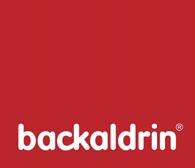

As part of the Regional Leaders Forum (with bilateral agreements between the provinces/regions of the Western Cape, São Paulo, Bavaria, Shandong, Quebec, Upper Austria and Georgia, USA), partner regions regularly engage on topics of mutual interest and possible collaboration.
During the visit to Upper Austria, a student exchange programme was discussed. At one of the site visits, the delegation met the management of Backaldrin, an Austrian company specialising in bakery pre-mixes and products. They expressed their wish to expand their footprint in the Western Cape by exploring the possibility of launching a bakery school where young South Africans can kick-start a career in baking. »


“When the right people with the same vision come together, you can expect things to happen,” says Susina Jooste, Director of the PHS.
This is exactly what happened during May this year when a group of learners graduated with a Cathsseta Certificate as bakers. The initiative was jointly driven by the Western Cape Department of Agriculture (WCDoA), Backaldrin, the PHS and the Hospitality Academy.


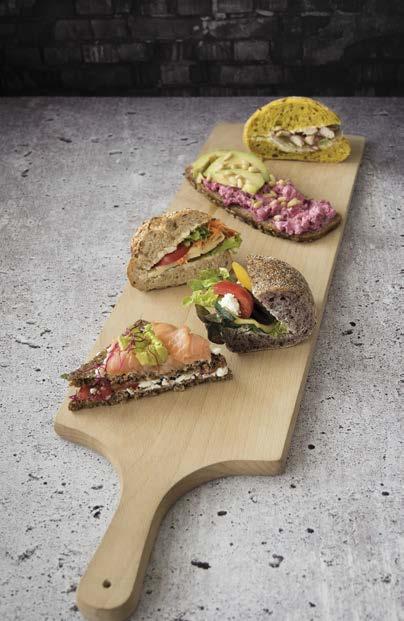
“With the high number of unemployed youth, we are convinced that ‘every drop counts’, and are proud to be part of a dedicated team who are committed to make a difference through education and training”, says Susina.

“When the right people with the same vision come together, you can expect things to happen.”Photo © Backaldrin International
Thabang Njuza, CEO of the Hospitality Academy, was extremely keen on this joint venture with the PHS and hit the ground running. The aim was to equip bakers with good practices, go back to basics and comply with health, hygiene and safety standards.



One of the learners on an internship with the WCDoA asked: “Do I leave what I’m doing and join the bakers’ field?” The reply was: “No! You need to complete what you started in agriculture and later link the two programmes completed and identify your expertise out of your own experience.”
“It was a pleasure to be part of the team in making an idea a reality and the learners’ participation and commitment towards achieving the programme exceeded my expectations,” said Thabang. “It was an excellent pilot project that brought a great opportunity to a small business like the Hospitality Academy growing towards the next level. We appreciate the opportunity Susina has offered us.” »
“We are incredibly honoured to be part of the first students from the PHS in Stellenbosch graduating with a basic baking certification,” said Hanjo de Fries, Managing Director of Backaldrin in Cape Town. “It has been a long process to get to the final day, but with the ‘just do it’ attitude of everybody involved, nothing could stop this project, and that is the way I think things should be done to get our communities qualified and employed!”


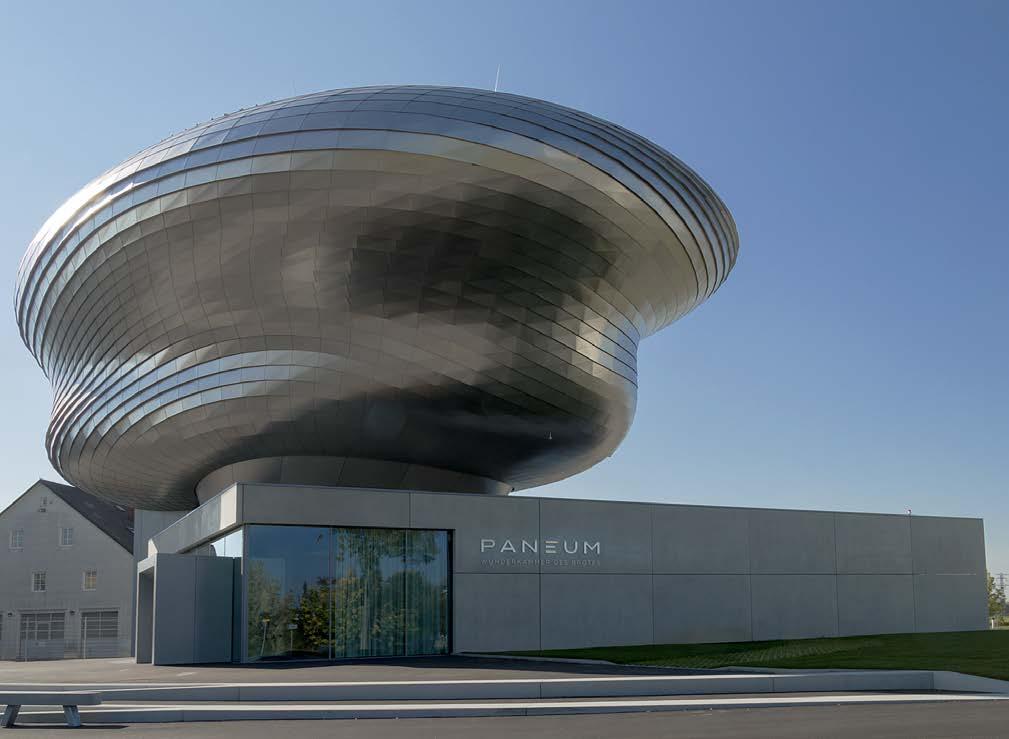
The first negotiations and planning started in 2016 when a delegation from the provincial governments of Upper Austria and the Western Cape met in Cape Town. As soon as the Department of Agriculture got involved in 2017, plans immediately kicked into action, and within a few months the PHS and Backaldrin, with the support of the department, certified the first eight bakers. “We are looking forward to be part of an even more detailed and advanced course for bakers and to create opportunities for our unemployed communities”, said Hanjo.
At the graduation ceremony, the graduates treated the attendees with the products of their excellent baking skills.

This whirlwind “better together, let us do it” venture between committed partners has been a sterling example of the power of partnerships in changing the lives of our young people. AP
For more information, contact Dr Ilse Trautmann: ilset@elsenburg.com
IIn die Agriprobe van Junie 2018 is die nuwe radioreeks Die Kwik Styg aangekondig en ses maande sedert die eerste program op 6 April 2018 op RSG uitgesaai is, lok die reeks ongekende belangstelling, nie alleen van die ateljeegaste nie, maar ook van die publiek en ons landboumense. Net minder as 300 000 luisteraars skakel weekliks in om na die program te luister!
Enige suksesvolle projek staan egter op twee bene – ’n duidelike doelwit en ’n toegewyde span wat week na week sorg vir

“Die kuns lê beslis in die verskeidenheid sprekers en onderwerpe – enersyds om die luisteraar deurlopend te prikkel, maar ook die bewusmaking oor ’n wye reeks onderwerpe.”Image © IgorZh
die keuse van sprekers, die skedulering van opnames en die keurige versorging van die opnames tot “lok-en-luister”-gehalte.
Die gassprekers is elkeen ’n kundige op hul gebied, hetsy binne of buite landbou, en word met die hand uitgesoek deur dr. Ilse Trautmann, Hoofdirekteur: Navorsing en Tegnologie-Ontwikkeling, bygestaan deur prof. Stephanie Midgley, spesiale klimaatsveranderingsraadgewer vir die departement, en Petro van Rhyn, kommunikasie-konsultant van die departement.
Die kuns lê beslis in die verskeidenheid sprekers en onderwerpe – enersyds om die luisteraar deurlopend te prikkel, maar ook die bewusmaking oor ’n wye reeks onderwerpe rakende die uitdagings van klimaatsverandering.

Nadat die sprekers instem tot die onderhoud, is ’n bekwame span nodig om ’n program op te neem wat spreek tot elke luisteraar, en hier is Lizma van Zyl en Lindsay Johnson ’n formidabele en toegewyde span wat die opnames, in opdrag van die departement, vir RSG vervaardig.

“Enige suksesvolle projek staan egter op twee bene – ’n duidelike doelwit en ’n toegewyde span.”
Die Kwik Styg se mikrofoon?
Lizma is ’n veteraan-radiojoernalis en -omroeper met ’n meestersgraad in joernalistiek. Sy is ook die stigter van die Kaapse radiostasie Smile 90.4FM.

Dié groot diereliefhebber is die aanbieder van die gewilde Hond se Gedagtes op kykNET, wat weer eersdaags op ons kassies gaan verskyn.
“Ek het verlede jaar my halfeeu op Moeder Aarde gevier en met dié mylpaal kom daar ook introspeksie”, vertel Lizma. “In hierdie
stadium van my lewe is ek bevoorreg om te kan terugkyk op ’n suksesvolle en opwindende radioloopbaan en spesiale oomblikke saam met my hondevriende op kykNET. Ek is gelukkig om steeds my passies te kan uitleef en dit geld ook vir Die Kwik Styg – ’n reeks wat my aan die werk van wonderlike mense in die landbousektor blootstel. Maar wat dalk nou met die wysheid van ’n meer beleë ouderdom kom, is wat ’n mens in die spieël sien en wie die nie-onderhandelbare mense in jou lewe is.
“My oorlede pa was ’n suksesvolle bankman met heelwat akademiese kwalifikasies. Op
’n vraag aan hom kort voor sy dood oor wat sy grootste prestasie was, was sy antwoord vinnig en beslis: ‘Dat ek in die net meer as vyftig jaar wat ek voltyds gewerk het, nie een dag afwesig was nie.’ Dit spreek tot sy ingesteldheid en integriteit – iets wat albei my ouers by my en my suster ingeprent het.
“Daardie middag is die eerste huiwerige, maar hoopvolle tree gegee tot Die Kwik Styg – ’n reeks wat my lewe met élke gesprek – voor of agter die mikrofoon – verryk.”
“Ek moet nog uitvind wat my grootste prestasie is, maar ek het ’n idee dit gaan nie kwalifikasies, titels en toekennings insluit nie. My gevoel is dat dit die waarde gaan wees wat ’n mens toevoeg en die verskil wat jy maak tydens die gemiddeld van net meer as 22 000 dae wat ons hier op aarde gegun word.”
“Min het ek geweet tot watter betekenisvolle reis daardie eerste ontmoeting sou lei…” vertel Lizma.
Die “geboortegesprek” oor ’n moontlike reeks oor klimaatsverandering (vir die Wes-Kaapse Departement van Landbou op RSG) het in Julie 2017 in ’n eetplek in Kaapstad plaasgevind.
“Ek het onmiddellik van Ilse, Stephanie en Petro gehou – drie vroue wat jou reguit in die oë kyk. Daardie middag is die eerste huiwerige, maar hoopvolle tree gegee tot Die Kwik Styg – ’n reeks wat my lewe met élke gesprek – voor of agter die mikrofoon – verryk.
“My kennis word daagliks verbreed danksy die kundige sprekers wat hul kosbare tyd aan ons afstaan, maar dis nie al nie: Ek het die voorreg om met ’n span mense, onder leiding van die uiters bekwame dr. Ilse Trautmann, te werk wat hul storie ken en selfs meer belangrik, régtig omgee vir ’n ieder en elk in die landbousektor.
“Hoewel die sentrale tema klimaatsverandering en die uitwerking daarvan op die landbousektor is, hoop en glo ek ons programreeks vind aanklank by almal wat êrens ’n verskil probeer maak en hierdie pragtige, maar brose planeet van ons vir die nageslag probeer bewaar.”

“When we started recording and producing Die Kwik Styg I already had a good understanding of what climate change is and the impact it has on our environment, but more importantly the impact we have on the environment in this regard. My wife, fortunately, is an environmental scientist who works in environmental consulting, and through her I’ve learnt a fair amount on the
topic over the years. I think it’s great that a series like this is being produced, because there are a lot of misconceptions among many people about what causes climate change. The information and research is being produced in a way that everyone can understand. It clears misconceptions and paints a picture about what is happening to the environment around us”.
Lindsay has crafted his passion for sound engineering over 16 years in the audio industry, covering both Cape Town and Johannesburg markets. He started

his audio career in radio broadcasting and has been an integral team member in building the sound of some of South Africa’s top radio station brands. He was the former head of production for two of Primedia Broadcasting’s FM radio stations in Johannesburg (947 and 702), an audio imaging producer for KFM 94.5, and the former head of production and technical for one of Cape Town’s fastest growing radio stations – Smile 90.4FM. At the latter, he was instrumental in “designing” the station sound when it launched in 2013, and continued to do so for the next four years. AP
Meer inligting oor die programreeks is beskikbaar op www.rsg.co.za en potgooie kan ook afgelaai word.


Lindsay and Lizma also have a longstanding working relationship dating back 16 years. They started working together in the early 2000s when they were both employed at KFM 94.5 and then again at Smile 90.4FM many years later. In 2015 Lindsay launched his own audio production studio called Crossfade Studio, where he continues to provide audio production services to various radio stations and clients around South Africa. Crossfade Studio is also the home for recording and producing Die Kwik Styg series.
Vir meer inligting oor die nuwe program op RSG: rsg.co.za
Vir aflaai van potgooie: www.rsg.co.za/potgooi-soek
Vir meer inligting, kontak Dr Ilse Trautmann: ilset@elsenburg.com

“Die aarde is kosbaar. Kom ons bewaar dit.”Image © ioat
TThe Kluitjieskraal Nursery offers opportunities for economic, social and biodiversity value chain transfer. The LandCare programme of the Western Cape Department of Agriculture has driven the development and management of the Kluitjieskraal Nursery and provides the salaries for nursery staff, who are from the neighbouring settlements, Kluitjieskraal Bosdorp and Pinevalley.
LandCare also provides training, which leads to the upliftment of the community.
“The annual Kluitjieskraal Nursery Information Day is an indication of a vision, where you collect your partners around you, and the message is: Restore the area and make it ecologically sustainable,” said Francis Steyn of LandCare Services.
“This day of selling plants to farmers was

“The annual Kluitjieskraal Nursery Information Day is an indication of a vision, where you collect your partners around you, and the message is: Restore the area and make it ecologically sustainable.”
an initiative by Rudolph Röscher, regional LandCare manager of the Cape Winelands. The first Kluitjieskraal Nursery sale day was held in 2008. “The economic value growth of indigenous trees and the importance of enhanced biodiversity is spreading to the farmers, who are able to get seedlings from the nursery, care for them until they are a certain size and then plant them”, said Francis.
“Kluitjieskraal used to be an old forest station, but in the 1990s many people lost their jobs. There were unemployed people with nursery skills living in Kluitjieskraal Bosdorp and Pinevalley. We decided to redevelop the Kluitjieskraal Nursery to uplift the community and encourage farmers and others to plant indigenous trees in rural areas,” said Rudolph.
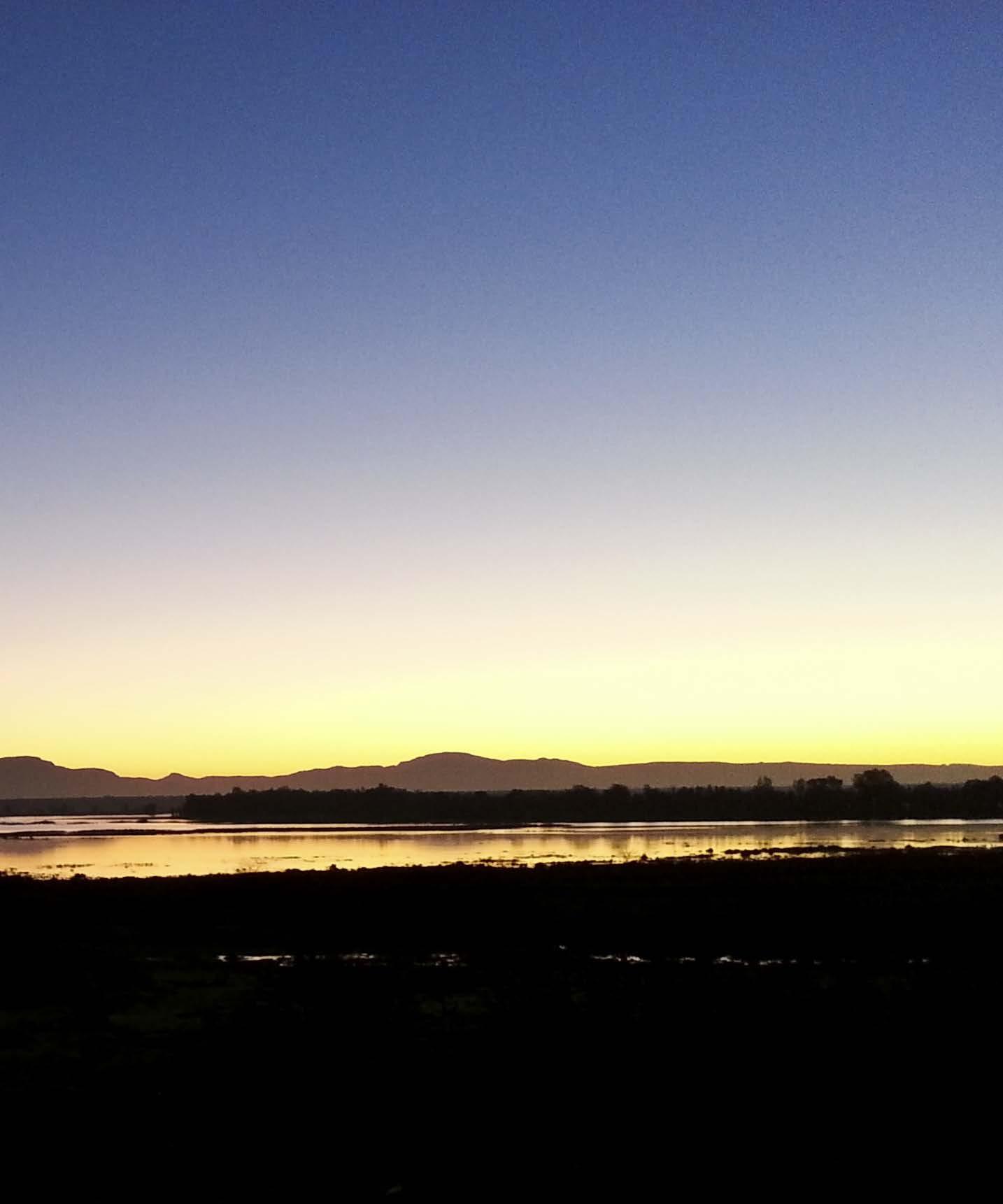
What are the achievable goals that have been reached by the LandCare initiative at Kluitjieskraal Nursery?

20 000 trees are grown at Kluitjieskraal Nursery per year.
In 2017, 12 000 trees were sold at the Nursery Day.
In 2018, 6 700 trees were sold to 70 different farmers, noting that this drop from 2017 was probably due to the drought conditions, as seedlings need to be watered.

There are 10 people employed at the nursery throughout the year. With an average of 240 working days per year, this equates to 2 400 person-days per year.
The Nursery Day is managed by Breedekloof Wine Valley and Tourism, whose sales provide finance for the running of the nursery and aspects such as the provision of irrigation, while also raising awareness about environmental issues.

The added value of the Kluitjieskraal Nursery is that it provides plants that assist in the rehabilitation of both areas cleared through alien clearing, namely along the rivers as well as indigenous plantings on farms. The rehabilitation along rivers in particular, leads to improved biodiversity, which in turn ensures sustainable ecotourism and improved water quality achieved by filtering, e.g. through palmiet plants.


“We decided to redevelop the Kluitjieskraal Nursery to uplift the community and encourage farmers and others to plant indigenous trees in rural areas.”Nursery workers at the Kluitjieskraal Nursery Sale Day 2018. Photo © Annabel Horn Pearl Valley in the Berg River Catchment after rehabilitation. Photo © Jason Mingo
“The Berg and Breede River Catchment rehabilitation programmes support the Kluitjieskraal Nursery. Since June 2013 just over 40 hectares were planted with indigenous plants from the Kluitjieskraal Nursery,” said Jason Mingo of the Western Cape Department of Environmental Affairs and Development Planning.
The nursery is integral to the indigenous plant biodiversity augmentation in the catchments of the Western Cape, as well as showing a transfer of value to the communities involved in both the

propagation in the nursery as well as the rehabilitation in areas cleared of alien plants.
The Kluitjieskraal Nursery, situated 2km from Wolseley, is open weekdays from 7h30 to 16h00 (closed on weekends and public holidays) to the public for tree sales. AP
For more information, contact:
Carol Jacobs: CarolJ@daff.gov.za
Annabel Horn: annabel.horn@westerncape.gov.za
and Adaptation (PROVIA). It is the premier international climate change adaptation conference attended by people from around the world to connect, learn and inspire! This conference was the first of its kind held in South Africa and attracted over 1 300 scientists, practitioners, business leaders and policymakers from across the world.
AA group of 60 delegates visited the Langgewens Research Farm of the Western Cape Department of Agriculture (WCDoA) on a learning journey during the recent Adaptation Futures 2018 Conference held from 18 to 22 June in Cape Town. This was one of several learning journeys during the conference.

Adaptation Futures is the biennial conference of the Global Programme of Research on Climate Change Vulnerability, Impacts
The WCDoA seized the opportunity to present its SmartAgri project and plan to delegates from several continents with a specific interest in climate change adaptation for the agricultural sector. Prof Stephanie Midgley and Dr Ilse Trautmann, Chief Director: Research and Technology Development, engaged with a receptive audience at both the learning journey and the conference session, where good discussions were had around the subject.

“Adaptation Futures is the biennial conference of the Global Programme of Research on Climate Change Vulnerability, Impacts and Adaptation.”
It is always insightful and helpful to engage in dialogue with experts from diverse perspectives and regions. Sometimes successful adaptation interventions can be applied to any other situation, but sometimes responses to particular challenges require local solutions and adjustment. It is important to learn from one another and question the approaches taken to make sure that the best possible solutions are identified and implemented locally.
After a bus journey of 70km to Langgewens Research Farm, one of the department’s seven research farms, delegates were treated to some fresh fruit and refreshments. Then


“It is important to learn from one another and question the approaches taken to make sure that the best possible solutions are identified and implemented locally.”Sakkie Rust, a successful Conservation Agriculture farmer.
they were welcomed by Dr Trautmann, after which Prof Midgley gave a short presentation on SmartAgri and its six priority projects, including one on Conservation Agriculture (CA).
CA was the focus of the day and Rens Smit, co-project leader, introduced the delegates to the work on small grains and conservation agricultural practises over the last 22 years on the farm. A rather cold and wet walk-and-talk followed during which delegates could see theory in practice.

Before the scrumptious farmers’ day lunch, Sakkie Rust, a farmer who is successfully practising CA, shared his journey with the delegates. Equipment companies that
partner with the department’s CA team also shared their learnings with the group and explained how important it is to develop equipment that is tailor-made to CA practices and farmers’ needs.
Armed with new knowledge and insights, delegates left the farm with goodie bags filled with information and a bottle of Elsenburg wine to remind them of this learning journey! AP
For more information, contact Dr Ilse Trautmann: ilset@elsenburg.com
Strawberries: a sweet opportunity lost

Western Cape Department of Agriculture
During October 2016 the Economic Partnership Agreement (EPA) between the European Union (EU) and the Southern Africa EPA Group came into force. The EPA includes a Tariff Rate Quota (TRQ) for 393 tons of South African frozen strawberries into the EU, which was not utilised over the preceding 18 months. Indeed, further analysis indicates that under the Trade and Development Cooperation Agreement (TDCA), the EPA’s predecessor, this TRQ
was not used since 2010 (EU, 2018). A clear case of a lost opportunity.
Global imports of fresh strawberries have increased by 148% over the past decade (401% over the last 15 years) from R15,1 billion to R37,5 billion. Frozen strawberry imports grew by 102% (228% over 15 years) to R13,3 billion in 2017 resulting in fresh strawberries imports being 2,8 times more than that of frozen strawberries (see Figure 1, below).
Source: ITC (2018)

The USA and Canada are responsible for more than two thirds of global fresh strawberry imports followed by EU members Germany (10%), UK (8%), France (6%), Belgium (4%), Netherlands (4%) and Italy (3%). The USA (18%) remains the biggest importer of frozen strawberries



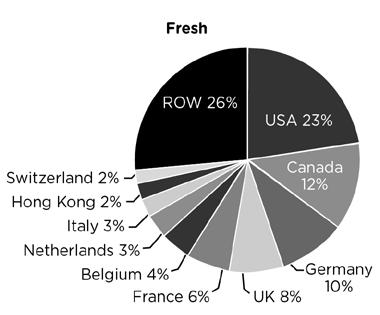
with Germany (15%) the second biggest, followed by other EU countries France (9%), Netherlands (8%), Belgium (4%), UK (3%) and Austria (2%) (Figure 2).
Spain exports more than a quarter of the world’s fresh strawberries, followed by the USA (18%), Mexico (16%), Netherlands (12%)
and Belgium (7%). The USA (18%) is the biggest exporter of frozen strawberries, followed by Germany (15%), France (9%) and Netherlands (8%) (Figure 3). Interestingly, the USA, Germany, France and Netherlands are big players for both the import and export of fresh as well as frozen strawberries.
At the turn of the century South Africa exported more frozen than fresh strawberries, but this has changed significantly over the past decade. In 2001 South Africa exported R2,1 million frozen and R1,1 million fresh strawberries increasing to R5 million and R38,2 million respectively (Figure 4) by 2017. Whereas fresh were 49% of frozen strawberry exports in 2001, it reached 763% (almost 8 times) by 2017; an increase of 9 535% in fresh strawberry exports over the past 15 years.
Although South Africa remains a small player in the global market, its share of fresh
strawberry exports increased from 0,005% in 2003 to 0,112% in 2017 – an increasing share of growing global trade in fresh strawberries. This is the ideal situation to be in (Figure 5 on next page).
South Africa’s exports of frozen strawberries have declined from 0,090% of global trade in 2001 to 0.003% in 2007, but have since recovered to 0,038% in 2017. This bounce-back can be attributed to the dominant position of one country (Swaziland), which was the destination for 91% of South Africa’s frozen strawberry exports in 2017 (Figure 6). Indeed, exports only started to recover when first Botswana (2010 – 2012) and then Swaziland (2012 to date) became export destinations (ITC, 2018).
A total of 42% of South Africa’s fresh strawberry exports go to the Arabian Peninsula (47% including Bahrain and Saudi Arabia) with South Africa’s immediate neighbours (Botswana, Namibia and
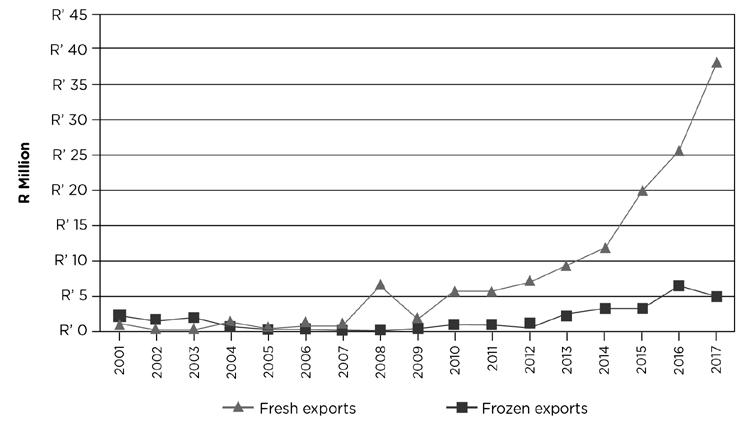
 Photo © oneSHUTTER oneMEMORY
Photo © oneSHUTTER oneMEMORY
Mozambique) accounting for 29% (32% adding Swaziland and Lesotho).
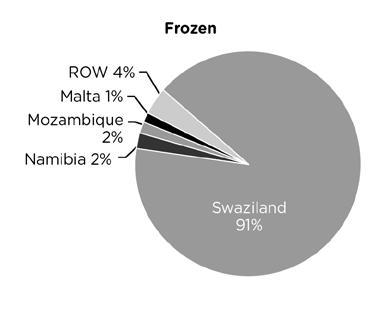
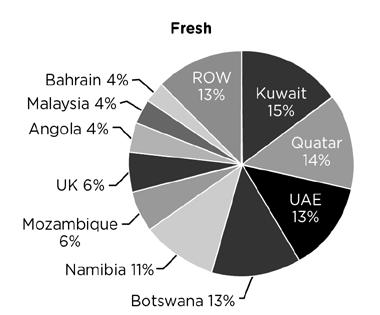
Returning to the topic of the paper. An amount of R2,741 million worth of fresh
and R26 000 in frozen strawberries were exported to EU member countries United Kingdom and Netherlands in 2017. Why was the TRQ not triggered?
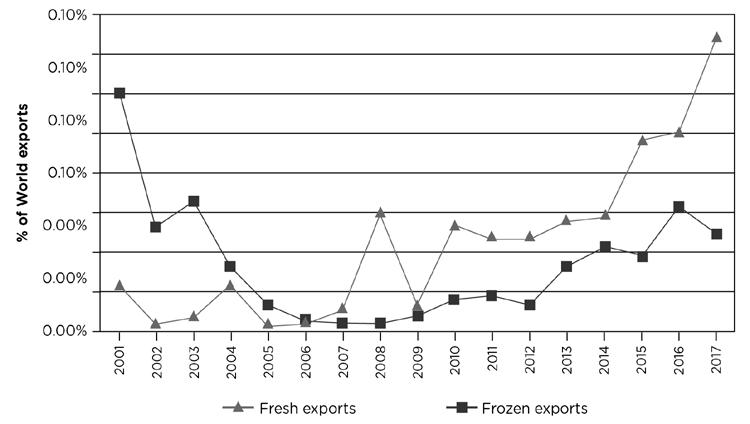
Source: ITC (2018)
Source: ITC (2018)
In this paper it was shown that international trade in strawberries (especially fresh strawberries) is rapidly growing. At the same time South Africa is gaining an increasing market share of this growing market, particularly in the Arabian Peninsula and in its neighbouring countries. Although some exports are taking place to the UK and
References
Netherlands, the TRQ is not utilised. This may imply that the industry is not aware of this opportunity or fresh rather than frozen strawberries should be targeted. Redirecting this TRQ may be an opportunity to be addressed during trade negotiations with the UK following Brexit. AP
EU (2018). Tariff and Customs database, http://ec.europa.eu/taxation_customs /dds2/ taric/taric_consultation.jsp

ITC (2018). International Trade Centre, Geneva. http://www.trademap.org

SPECIALISED
Drought
Climate change Listen
Elsenburg
Is a quarterly magazine, distributed to subscribers at no charge by the Western Cape Department of Agriculture.
Subscription
For free subscription to this quarterly magazine, please submit your details to Magrieta de Lange. Tel: 021 808 7613 | Fax: 021 808 7605
Email: magrietadl@elsenburg.com
Contact us
Western Cape Department of Agriculture
Tel: 021 808 5111
Email: info@elsenburg.com
Web: www.elsenburg.com
Printing
Geronamo Communications
Tel: 021 532 3430
Packaging
Stellenbosch Work Centre for Adults with Disabilities
Tel: 021 887 8688
Email: pmwill@sun.ac.za
You can also read your copy online and subscribe at www.elsenburg.com/resource-library/agriprobe
Don’t forget to tune into RSG Landbou every Friday morning at 04:45 and on Saturdays at 11:45. Listen to the highly informative programmes on the Western Cape Department of Agriculture and the Agricultural Sector in general. If you miss it on the radio, you can also listen to the programmes of the week on www.elsenburg.com/resource-library/radio-elsenburg
Luister elke Vrydagmiddag om 12:45 na Die Kwik Styg op RSG waar kenners gesels oor klimaatsverandering.
ISSN: 1810-9799